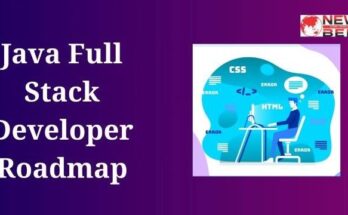Scope of Python in Future: Python has an incredibly promising future in the world of technology and beyond. Its versatility, simplicity, and a vast ecosystem of libraries and frameworks make it a top choice for everything from web development and data science to artificial intelligence and automation. As industries increasingly embrace these domains, Python’s demand is expected to grow, ensuring its relevance for years to come. Whether you’re a programmer, data analyst, or aspiring technologist, Python’s scope offers abundant opportunities for innovation and career advancement.
Scope of Python in Future
Python, a versatile and dynamic programming language, has witnessed remarkable growth and popularity over the years. Its simplicity, readability, and vast library ecosystem have made it a favorite among developers, educators, and businesses. As we look into the future, Python’s scope continues to expand across various domains, including web development, data science, machine learning, artificial intelligence, automation, and more. In this article, we’ll explore Python’s future scope in these domains, shedding light on why it remains a powerful and relevant choice for years to come.
1. Python’s Growth Story
To understand Python’s future prospects, it’s essential to appreciate its journey thus far. Python was created by Guido van Rossum in the late 1980s and was officially released in 1991. Since then, it has grown steadily in popularity, thanks to several key factors:
a. Readability and Simplicity
Python’s syntax is clean and easy to read, making it an excellent choice for both beginners and experienced developers. This simplicity reduces the likelihood of errors and encourages good coding practices.
b. Strong Community and Ecosystem
Python boasts a vibrant and supportive community of developers, contributing to its extensive library ecosystem. The Python Package Index (PyPI) hosts thousands of packages and modules, covering a wide range of applications.
c. Cross-Platform Compatibility
Python is available on various platforms, including Windows, macOS, and Linux. This cross-platform compatibility ensures that code written in Python can run seamlessly across different operating systems.
Also, Read This: What is Digital Marketing in Hindi
d. Open Source
Python’s open-source nature means it’s freely available, and anyone can contribute to its development. This openness fosters innovation and has led to the creation of numerous libraries, frameworks, and tools.
e. Versatility
Python’s versatility is another significant factor contributing to its popularity. It can be used for a wide range of applications, from web development and scientific computing to data analysis and artificial intelligence.
2. Python in Web Development
Python’s future in web development looks promising, with several frameworks and libraries catering to different aspects of web development. Here’s a glimpse of what the future holds:
a. Django
Django, a high-level Python web framework, continues to evolve. Its robustness, security features, and built-in admin panel make it a top choice for building web applications. The Django community actively maintains and updates the framework, ensuring its relevance in modern web development.
b. Flask
Flask, a lightweight and micro web framework, appeals to developers looking for simplicity and flexibility. Its minimalistic approach makes it suitable for building small to medium-sized web applications and APIs. Flask’s future lies in its ability to maintain its lightweight charm while accommodating modern web development needs.
c. FastAPI
FastAPI, a relatively new addition to the Python web development ecosystem, has gained popularity for its performance and ease of use. It leverages Python’s type hinting system to provide automatic API documentation and validation. FastAPI’s future is bright as more developers recognize its potential for building high-performance web APIs.
d. WebAssembly
Python’s compatibility with WebAssembly (Wasm) opens doors to running Python code in web browsers. This technology allows Python developers to create web applications with client-side Python code, expanding Python’s presence in the web development landscape.
e. Full-Stack Development
Python’s versatility extends to full-stack development. Developers can use Python for both server-side and client-side programming, thanks to frameworks like Django and libraries like Vue.js or React. This full-stack capability positions Python as a robust choice for end-to-end web development projects.
3. Python in Data Science
Python’s role in data science and analytics is well-established, and its future in this domain looks exceptionally promising. Here’s why:
a. Data Science Libraries
Python offers a rich ecosystem of data science libraries, including NumPy, pandas, Matplotlib, Seaborn, and SciPy. These libraries empower data scientists and analysts to manipulate, visualize, and analyze data efficiently.
b. Machine Learning and AI
Python is the de facto language for machine learning and artificial intelligence. Libraries like TensorFlow, Keras, PyTorch, and scikit-learn make it easy to build and deploy machine learning models. As machine learning and AI continue to advance, Python’s role as the go-to language for these fields will solidify.
c. Data Visualization
Data visualization is crucial for data interpretation and communication. Python’s libraries, such as Matplotlib, Seaborn, and Plotly, enable the creation of compelling data visualizations. This capability is invaluable for data scientists and analysts.
d. Big Data and Distributed Computing
Python is making strides in the big data and distributed computing arena. Libraries like Dask and Apache Spark with PySpark bindings allow developers to work with massive datasets efficiently. Python’s presence in big data will likely grow as these tools become more integral to data science workflows.
e. Data Engineering
Python is increasingly used for data engineering tasks, including data extraction, transformation, and loading (ETL). Frameworks like Apache Airflow simplify workflow automation and orchestration in data pipelines. As data engineering gains importance, Python’s role in this domain will expand.
4. Python in Machine Learning and AI
Python’s future in machine learning (ML) and artificial intelligence (AI) is exceptionally bright. Here are some key reasons why Python is the language of choice for ML and AI:
a. Rich Ecosystem
Python boasts a rich ecosystem of ML and AI libraries and frameworks, including TensorFlow, Keras, PyTorch, scikit-learn, and OpenAI’s GPT-3. These tools make it easier for developers to create and experiment with ML and AI models.
b. Accessibility
Python’s simplicity and readability lower the barrier to entry for aspiring AI and ML practitioners. This accessibility has led to a surge in AI and ML enthusiasts and professionals using Python as their primary language.
c. Community Support
The Python community actively supports and contributes to ML and AI projects. This collaboration fosters innovation and ensures that Python remains at the forefront of these rapidly evolving fields.
d. Integration with Other Technologies
Python seamlessly integrates with other technologies, making it easier to incorporate ML and AI into various applications. Whether it’s web development, mobile apps, or IoT devices, Python can be used to deploy AI and ML solutions effectively.
e. Research and Experimentation
Python’s role in research and experimentation in AI is significant. Many AI researchers and practitioners use Python for prototyping and experimenting with novel algorithms and models. This research contributes to advancements in AI and benefits the broader community.
5. Python in Automation and Scripting
Python’s simplicity and versatility make it an excellent choice for automation and scripting tasks. Its future in this domain is promising for several reasons:
a. Cross-Platform Compatibility
Python’s ability to run on multiple platforms makes it an ideal choice for cross-platform automation. Whether you’re automating tasks on Windows, macOS, or Linux, Python can handle it.
b. Extensive Libraries
Python’s extensive standard library and third-party packages simplify automation tasks. Modules like os, subprocess, and shutil provide tools for file manipulation, process management, and system interaction.
c. Scripting for DevOps
Python is widely used in the DevOps domain for tasks such as configuration management, deployment automation, and monitoring. Tools like Ansible and SaltStack leverage Python for infrastructure automation.
d. Robotics and IoT
Python’s role extends to robotics and the Internet of Things (IoT). Libraries like PySerial and MicroPython enable developers to work with hardware and embedded systems. Python’s versatility positions it as a go-to language for IoT and robotics projects.
e. Natural Language Processing (NLP)
Python’s Natural Language Processing (NLP) capabilities are valuable for automating tasks involving text and language. NLP libraries like NLTK and spaCy facilitate text analysis, sentiment analysis, and language generation.
6. Python in Scientific Computing
Python has made significant inroads in the field of scientific computing and continues to be a preferred choice for researchers and scientists. Here’s why Python’s future in scientific computing is promising:
a. Scientific Libraries
Python’s scientific libraries, including NumPy, SciPy, SymPy, and pandas, provide essential tools for mathematical modeling, data analysis, and symbolic mathematics.
b. Jupyter Notebooks
Jupyter notebooks have become a standard for interactive scientific computing and data analysis. They support multiple programming languages, but Python is the most commonly used language in Jupyter environments.
c. Simulation and Modeling
Python is used extensively for simulation and modeling in various scientific disciplines, including physics, chemistry, biology, and engineering. Libraries like SciPy and Matplotlib are instrumental in these endeavors.
d. Symbolic Mathematics
Python’s SymPy library allows for symbolic mathematics, making it a valuable tool for researchers and mathematicians. It’s used for algebraic computations, calculus, and symbolic equation manipulation.
e. Interdisciplinary Collaboration
Python’s versatility encourages interdisciplinary collaboration among scientists and researchers. Its ease of use and wide adoption mean that professionals from different fields can work together seamlessly using Python as a common language.
7. Python in Game Development
Python’s presence in the game development industry is on the rise. While it may not be the first choice for developing high-end AAA games, it has a bright future in several game development aspects:
a. Game Prototyping
Python’s simplicity and rapid development capabilities make it an excellent choice for prototyping game ideas. Developers can quickly create proof-of-concept games using Python before transitioning to other languages for production.
b. Game Engines
Python is used in various game engines and frameworks like Godot Engine and Pygame. These engines offer tools and libraries that enable developers to create 2D and 3D games using Python.
c. Game AI
Python’s role in game development extends to artificial intelligence for in-game characters. Developers use Python to implement AI algorithms and behaviors, enhancing the gaming experience.
d. Tools and Utilities
Python is commonly used for creating tools and utilities that aid in game development, such as level editors, asset pipelines, and game testing scripts. These tools improve efficiency and streamline the development process.
e. Indie Game Development
Python is popular among indie game developers and small studios due to its accessibility and ease of use. It allows smaller teams to create unique and engaging games without the resource demands of larger studios.
8. Python in IoT (Internet of Things)
Python’s role in the Internet of Things (IoT) is expanding as the IoT landscape continues to grow. Here’s why Python’s future in IoT is promising:
a. MicroPython
MicroPython is a Python implementation designed for microcontrollers and embedded systems. It enables developers to write Python code that runs on resource-constrained devices, making it suitable for IoT applications.
b. Raspberry Pi and Single-Board Computers
Python is the recommended language for programming Raspberry Pi and other single-board computers. This makes it accessible for hobbyists and developers working on IoT projects using these platforms.
c. IoT Protocols
Python supports various IoT protocols, including MQTT and CoAP, making it easier to communicate with IoT devices and sensors. Libraries like Paho MQTT simplify the development of IoT applications.
d. Data Analysis and Visualization
Python’s data analysis and visualization capabilities are valuable for IoT applications. It enables developers to process and visualize data from sensors and devices, leading to better insights and decision-making. Scope of Python in Future.
e. Cloud Integration
Python integrates seamlessly with cloud platforms, allowing IoT devices to send data to and receive commands from cloud services. This cloud integration enhances the scalability and functionality of IoT applications.
9. Python in Cybersecurity
Python is increasingly relevant in the field of cybersecurity, where its versatility and ease of use make it a valuable tool for both defenders and attackers. Here’s why Python’s future in cybersecurity is significant:
a. Security Tools
Python is widely used to develop security tools and scripts for tasks such as network scanning, vulnerability assessment, and penetration testing. Frameworks like Scapy and Metasploit leverage Python for security-related tasks.
b. Automation in Security Operations
Security operations teams use Python for automating routine tasks, such as log analysis, incident response, and threat detection. This automation improves the efficiency of cybersecurity workflows.
c. Machine Learning for Security
Python’s dominance in machine learning extends to the field of cybersecurity. ML algorithms in Python are used for anomaly detection, malware classification, and behavioral analysis to enhance security measures.
d. Scripting for Exploits
Python’s ease of use makes it a preferred choice for scripting and developing exploits. Ethical hackers and penetration testers use Python to identify vulnerabilities and assess the security of systems.
e. Community Collaboration
Python’s cybersecurity community actively collaborates on open-source projects and shares tools and resources. This collective effort strengthens Python’s position as a key language in the cybersecurity domain.
10. Python in Blockchain and Cryptocurrency
Python’s role in blockchain and cryptocurrency development is growing as these technologies gain prominence. Here’s why Python’s future in this domain is noteworthy:
a. Smart Contracts
Python is used for developing smart contracts on blockchain platforms like Ethereum. The Python-based Solidity language simplifies the creation of self-executing contracts.
b. Cryptocurrency Trading
Python is widely used for building cryptocurrency trading bots and algorithms. Libraries like CCXT provide APIs for interacting with various cryptocurrency exchanges, facilitating automated trading strategies.
c. Blockchain Prototyping
Python’s rapid development capabilities are beneficial for prototyping blockchain projects. Developers can quickly test ideas and concepts before committing to a specific blockchain platform.
d. Blockchain Analytics
Python’s data analysis and visualization capabilities are useful for blockchain analytics. Researchers and analysts use Python to study blockchain transactions and gain insights into the cryptocurrency market.
e. Cryptography
Python offers robust cryptography libraries, making it suitable for cryptographic implementations in blockchain and cryptocurrency projects. Security is paramount in this domain, and Python’s cryptography tools are highly regarded.
11. Python in Education
Python’s simplicity and readability make it an ideal choice for teaching programming and computer science concepts. Its future in education is bright for several reasons:
a. Beginner-Friendly
Python’s straightforward syntax and gentle learning curve are well-suited for beginners. It allows students to focus on programming concepts rather than wrestling with complex language features.
b. Educational Resources
There is a wealth of educational resources, tutorials, and courses available for learning Python. These resources cater to learners of all ages, from primary school to higher education.
c. Computational Thinking
Python encourages computational thinking and problem-solving skills. It equips students with the ability to tackle a wide range of problems and prepares them for future careers in technology.
Also, Read This: What is SEO? Type and Key Factors of SEO
d. Versatility in Education
Python’s versatility allows it to be used in various educational contexts. It can be employed for teaching mathematics, data science, artificial intelligence, robotics, and more.
e. Supportive Community
The Python community actively supports educators and initiatives aimed at teaching Python. This collaboration ensures that Python remains a foundational language in computer science education.
Conclusion
The scope of Python in the future remains exceptionally promising. Python’s versatility, large community support, rich ecosystem, and adaptability to emerging trends make it a formidable language in various domains, from data science and AI to web development and IoT. While it does have some weaknesses, the Python community is actively working to address them, ensuring that Python remains competitive and relevant.




